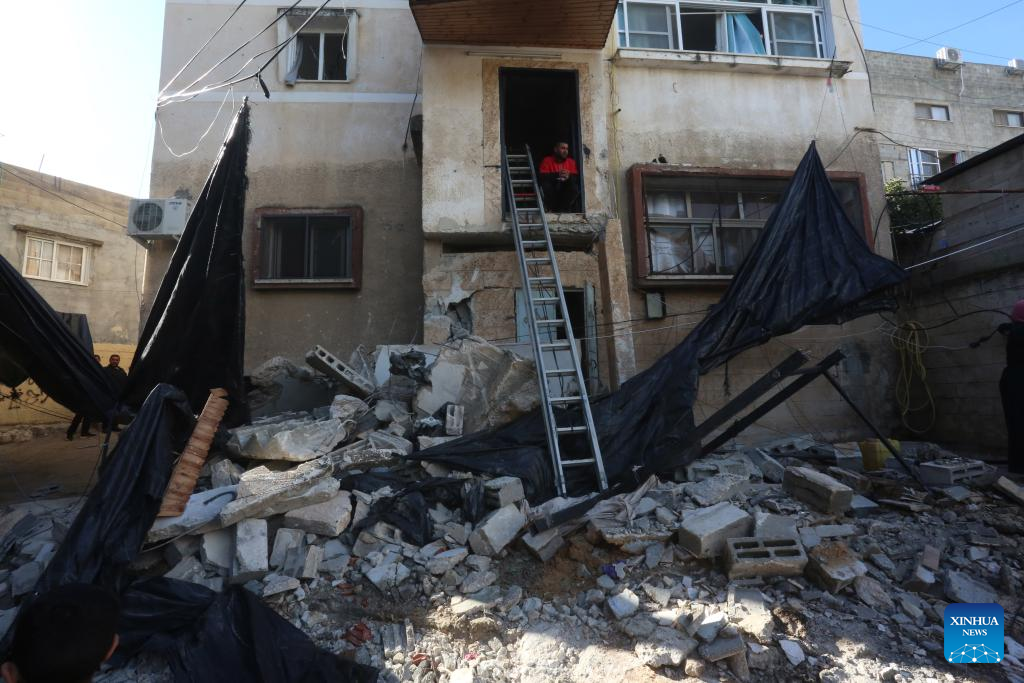US defense leaders are hoping to prevent the risk of wider regional conflict, through a sustained high level of US military presence and by engaging with Israelis ….reports Asian Lite News
The top two US military leaders are traveling to Tel Aviv to advise the Israeli government on how to transition from major combat operations against Hamas in Gaza to a more limited campaign and prevent a wider regional war. Their trip comes as Iranian-backed militants on Saturday launched a wave of attack drones against ships in the Red Sea and said they would continue until Israel’s “aggression” ends.
One of the American warships assigned to the Ford carrier strike group, the destroyer USS Carney, “successfully engaged” 14 one-way attack drones launched from Houthi-controlled areas of Yemen, US Central Command said in a statement. Britain reported that a Royal Navy destroyer downed another drone that was targeting commercial ships.
It was the latest in a series of attacks threatening commercial and US Navy ships in the Red Sea that have escalated after Israel intensified its response to the Hamas’ strike against Israel on Oct. 7. Israel is stinging from the deadliest attack ever on its homefront and has pledged that its offensive will not cease until Hamas is destroyed.
US defense leaders are hoping to prevent the risk of wider regional conflict, both through a sustained high level of US military presence and by engaging with the Israelis to get them to move beyond the massive bombardment campaign.
Defense Secretary Lloyd Austin and Joint Chiefs Chairman Gen. CQ Brown, who are heading to Israel, served in leadership roles as US airpower and ground forces moved from major combat to lower-intensity counterterrorism operations in Iraq and Afghanistan. But it is not clear how deeply their advice from lessons learned will resonate with Prime Minister Benjamin Netanyahu’s government.
Their trip highlights the increased efforts by the Biden administration to convince Israel that it should scale back its offensive, which has flattened much of Gaza’s northern region, displaced millions and killed more than 18,700 Palestinians, according to the Health Ministry in the Hamas-run territory.
Israel’s push has been complicated by the dense urban population and Hamas’ network of tunnels, and the militants are accused of using civilians as “human shields.” The sustained intensity of Israel’s campaign has led President Joe Biden to warn that the US ally is losing international support because of its “indiscriminate bombing.”
US officials have been telling Israel for several weeks that its window is closing for concluding major combat operations in Gaza without risking the loss of even more backing.
In a meeting Thursday, Biden’s national security adviser, Jake Sullivan, urged Netanyahu to shift to more targeted operations by smaller military teams hunting specific high-value targets, rather than the sustained broad bombardment that has occurred so far. In response, Israeli Defense Minister Yoav Gallant said his country would continue major combat operations against Hamas for several more months.
There are implications for the tens of thousands of US service members deployed in the region.
Austin on Friday extended the deployment once more of the aircraft carrier USS Gerald R. Ford and a second warship in order to retain a two-carrier presence in the Mediterranean Sea. The ships are seen as vital to deter Iran from widening the Israel-Hamas war into a regional conflict. The approximately 5,000 sailors aboard the Ford were originally due home in early November.
There are 19 US warships in the region, including seven in the eastern Mediterranean. A dozen more stretched down the Red Sea, across the Arabian Sea and up into the Arabian Gulf.
The missile and drone attacks have led at least two major shipping companies, Hapag-Lloyd and Maersk, to order their commercial vessels to temporarily pause transits through the strait.
“This is a worldwide problem that affects Israel, too,” Gallant said the Houthis blocking shipping in the Red Sea. “We are ready to act. We know what to do. And we will find the right timing to act. We are giving a chance, in the maritime issue, to the international system. If we reach a situation where we are the final option, we will know what to do,” he said about a possible military response.
Mohammed Abdel-Salam, the Houthis’ chief negotiator and spokesman, wrote on X, the social media platform formerly known as Twitter, that the Houthis would keep targeting Israel-linked vessels “until the aggression stops; the siege on Gaza is lifted; and humanitarian aid continues to flow into the Strip.”
Austin is expected also to visit Bahrain and Qatar and further work toward establishing a new maritime mission to provide increased security for commercial ships sailing in the southern Red Sea. Bahrain is the home of the US Navy’s Central Command headquarters and the international maritime task force charged with ensuring safe passage for vessels in the region.
ALSO READ: Museum of the Future welcomes COP28 world leaders, delegates














